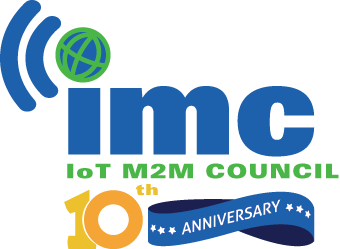Vodafone protects salmon from climate change
- June 21, 2023
- Steve Rogerson

Vodafone is using IoT technology to monitor water quality and temperatures at the River Nith in Scotland to help protect Atlantic salmon from the effects of rising water temperatures and changing rainfall patterns caused by climate change.
The project is part of the restoration of the River Nith, and its tributaries, to help ensure the preservation of Atlantic salmon. It will initially run for one year.
For centuries, the River Nith has been home to Atlantic salmon, one of Scotland’s iconic species. But in recent decades, the return of adult salmon to the river has been declining year-on-year. According to the Atlantic Salmon Trust, wild salmon numbers have declined 70% in the past 25 years, with water quality and rising water temperatures the two environmental factors known to impact salmon populations.
Salmon are cold water fish. As climate change causes temperatures to rise, it becomes harder for them to find the cold water they need to survive and thrive. Warmer water has less oxygen, which makes it harder for the fish to breathe. The increased need for oxygen forces salmon to use more energy and swim farther in search of food and cooler water.
In addition, each individual salmon returns to spawn in the river where it hatched, so if the temperatures go over 23˚C, the Atlantic salmon cannot return to their spawning ground, which will disrupt their life cycle and threaten their very existence.
The Nith District Salmon Fishery Board has been monitoring Atlantic salmon stocks for over 30 years and one of the issues they have seen is the erosion of the immediate land zone at the side of the watercourse, meaning the channel goes very wide, increasing water temperatures.
Vodafone and electric offroad racing series Extreme E are working with the Nith District Salmon Fishery Board to find more sophisticated IoT technology to give more accurate water quality and temperature readings. From theses readings, the Nith District Salmon Fishery Board can understand which parts of the river catchment are most vulnerable and how they can then apply tree planting and other initiatives to try to resolve the issues.
Vodafone is providing water quality sensors and temperature sensing devices submerged in the river and on the riverbank, all connected over its IoT network. They can collect and analyse vast amounts of data quickly and efficiently, helping the fishery board accurately assess the quality of water and the temperature in the area.
The sensors are designed to withstand harsh environments. They are placed in the water and attached to trees in the surrounding area. The data are constantly gathered and transmitted back to a web portal accessible by the Nith District Salmon Fishery Board.
NB-IoT operates within a very narrow radio band frequency, so it can provide coverage over longer distances than traditional networks, even in remote areas. It also operates at low power so batteries within IoT devices in the field, such as sensors, can last up to ten years. This combination ensures NB-IoT products are more sustainable and less expensive to install and run than alternatives using 4G or fixed-line networks.
“At Vodafone, we are determined to reduce carbon emissions and our impact on the planet, but also enable our partners, suppliers and the UK to do the same,” said Gemma Barsby, head of IoT at Vodafone. “Our partnership with Extreme E is based on these shared core values, and the River Nith legacy project is a perfect example of how technology can be used to monitor environmental conditions of fish populations and the impact of the measures taken over time. IoT technology can be used in remote and hard-to-reach places and we see lots of opportunities to use IoT to better support the environmental and sustainability agenda.”
Jim Henderson, director of the River Nith Catchment Fishery Trust, added: “It is fantastic to work with Vodafone and Extreme E on this innovative, collaborative project. The legacy project has the potential to transform the future of Atlantic salmon in the way we are able to collect and analyse data, and to reduce the need for frequent site visits. The project will also help us to gather more data which is critical to targeting efforts to measure the impact of rising temperatures on salmon populations.”




